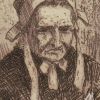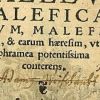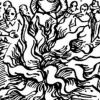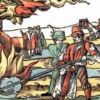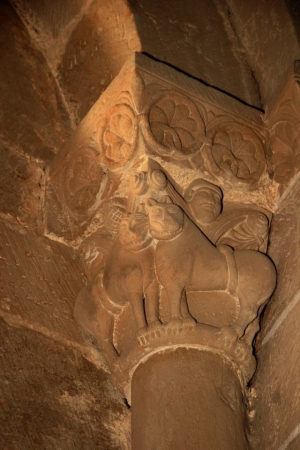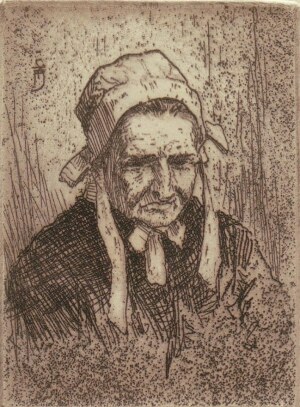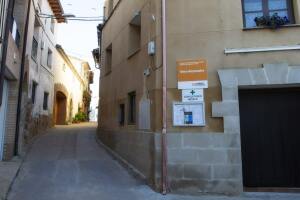In the 16th and 17th centuries many women were accused of witchery. It is documented that “there were witches in the whole of Aragón in the 17th century.” In Pozal de Vero a witch called Dominica la Coja was known and there were others in Salas Altas and Alberuela de Laliena.
Practising magic was considered an offence and was rigorously pursued by the courts in Europe during the Middle Ages. It particularly affected the female population as the majority of these investigations were initiated against a specific figure, one that was unpopular and the object of many obsession; the witch.
The requisites of being labelled a witch were few. It was enough to have an opinion that was different to the norm and a simple suspicion of authority in order for the investigations to begin. These would then develop according to the will of the judges in place, who were responsible for overseeing a number of material tests to prove a link between the related facts and the alleged criminal.
Amongst those pursued there was a large percentage of midwives who, through their work in various villages, were responsible for receiving and then spreading popular culture. These were soon converted into agents of the widely-held suspicion against doctors, men of science who personified an elite culture, which intended to impose power from different sources.
In this manner the figure of the midwife-witch was born, whose definitive conversion to reality was documented in the famous malleus maleficarum. This was a theological-scholastic treaty that passed the responsibility of all the manifestations of evil in the world to the witches. According to the authors it was the midwife that caused the greatest harm. They were said to cause sterility in women or masculine impotency so preventing fertile women from conceiving. They provoked abortions and killed any babies that managed to survive that and be born. The witches would devour part of their bodies and use the rest to make harmful ointments. Despite all this some children survived, but these were then offered to the devil as the witch’s fifth and final option.
The inquisition accepted the criminal participation of midwives in infant death. In 1534 a tribunal in Zaragoza sent Dominica la Coja to be executed by torture having extracted different confessions from her and La Nadala, her accomplice. “It was the two together who entered the house of Roiz Castellon and the devil opened the door for them, and they went inside to the chamber of Roiz and his wife who were sleeping, and took the child from the arms of Roiz and took it to the kitchen and…thanks to La Nadala they took embers from the fire and placed the child on the embers and roasted the child’s tummy…and he died without delay.”
In 1579 Martina Dueso, witch of Albueruela de Laliena, was condemned by the Huesca Courts for participating in covens that took place in Eras de Tolosa.
Less important were the certain facts and the truth; less important was what could be seen by the eyes. At the time of decision, a bad reputation was enough.



